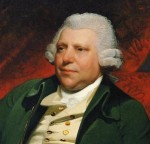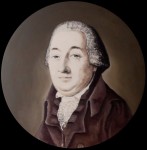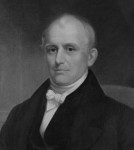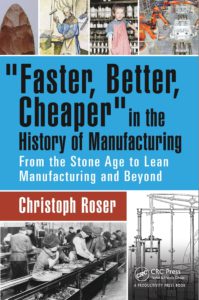 The Industrial Revolution changed the lives of ordinary people faster and more radically than any other period in history before it. Within only a few decades, small artisan shops were replaced by large factories. The Industrial Revolution started with the mass processing of cotton. Yet, as we will see, this happened only due to significant industrial espionage across multiple countries.
The Industrial Revolution changed the lives of ordinary people faster and more radically than any other period in history before it. Within only a few decades, small artisan shops were replaced by large factories. The Industrial Revolution started with the mass processing of cotton. Yet, as we will see, this happened only due to significant industrial espionage across multiple countries.
Prelude
Any modern industry is based on large-scale production. Even for highly specialized products, such as machine tools, a company doesn’t make only one tool, but it tries to make as many (different) tools as possible. In order to make a profit with mass production, you need to have large-enough material suppliers and large-enough markets. During the early eighteenth century, there were few products that qualified.
One of the few products that qualified was clothing, especially cheap clothing made from cotton. Pretty much everybody in Europe needed clothes, hence we had a large market even considering the very limited transport capabilities. Since cotton came from America and India, it arrived quite literally by the shipload.

The bottleneck for processing cotton, however, was spinning. One weaver with an eighteenth-century hand loom with flying shuttles could keep multiple spinners busy. This was especially true since spinning was typically women’s work after other chores were done. Hence, the Industrial Revolution started with mass spinning of cotton.
Britain Steals Italian Spinning Technology
One of the first to try mechanized spinning in England was Thomas Cotchett . He built a water-powered mill for spinning silk in 1702. Silk was much easier to spin due to its longer fibers, but back then even more than it is today, it was a luxury product with a limited market. In any case, Cotchett could not get the mechanics sorted out and his company went bust in 1712.

One employee, John Lombe, wanted to establish a similar business. However, he was aware of his lack of knowledge of mechanized spinning. Back then, Italy was the technical center of the silk-spinning world, having used water-powered silk spinning since at least 1276, although they never built larger factories. In any case, Lombe decided to do a study trip to Italy and learned Italian in preparation. He didn’t learn much from numerous silk plant visits, though, and he decided to become an employee of one of these silk-spinning establishments.
With a little bit of bribery to a priest, he managed to get hired. With a little bit more bribery, he convinced his foreman to stay in the workshop at night. Hence he worked during the day and made technical drawings and sketches at night. He hid these drawings in bales of silk that he shipped to his brother in England.

Now, his espionage was dangerous. Italy tried to protect its intellectual property, and the punishment was nothing less than the death penalty (and they meant it!). Just when Lombe was about to complete his intelligence-gathering mission, he was found out. He barely made it onto an English merchant ship. The Italians chased that merchant with a military vessel, but the merchant was able to outrun the Italians.
Hence, both Lombe and his drawings arrived safely in England, where Lombe started to establish a factory based on the stolen Italian technology. Naturally, before that he patented his technology. The silk mill was a smashing success.

In any case, he would not have needed to go through all the trouble. The technical details of the silk-spinning machinery was well documented in a 1607 book, Theater of Machines (Novo Teatro di Machine et Edificii) by Vittorio Zonca. These drawings were also of much better quality than Lombe’s sketches. Copies of it were even available in British libraries.
Italy Retaliates (… or did it?…)

John Lombe successfully started his silk mill. Shortly thereafter, a beautiful young Italian woman started to work at the factory and befriended John Lombe. And, shortly after that, Lombe’s health declined and he died very young and very painfully at age 29 of unknown causes.
Public opinion immediately knew what was going on – the Italian female assassin was sent by the King of Sardinia to poison Lombe. The woman was arrested, but lucky for her the English legal system was rather advanced. During the trial they could not find evidence and the court followed the innocent until proven guilty rule. The woman quickly left for Italy before the British would change their mind.
Lombe’s brother Henry took over, but within a year he was dead, too. However, since he shot himself in the head, they could not really blame the Italians for that.

Another British entrepreneur, Richard Arkwright (among others), also improved on the now-British technology. Arkwright adapted the machines for the much shorter cotton fiber, building a cotton-spinning mill. As cotton was much cheaper than silk, demand was much larger, and Arkwright built a series of very profitable mills in the region.
As the Italians tried(unsuccessfully) to protect their secrets, so did the British now that it was their technology. As with the Italians, punishment was death, both for exporting technology and for emigration of skilled personnel. Yet, as we will see, that did not work either.
Germany Steals British Spinning Technology

As Lombe was interested in Italian technology, so was a German businessman, Johann Gottfried Brügelmann, interested in British technology. Brügelmann sent a friend, Carl Albrecht Delius, to Britain. Delius bribed the right people and started to work for Arkwright’s Cromford Mill. Not only did he learn about the technology and make sketches, but he also stole spare parts and convinced one British worker to emigrate to Germany. Thus British technology came to Germany. There is one difference, however. Brügelmann credited the British sources. After establishing his new mill in 1783, he named it Textilfabrik Cromford after Arkwright’s Cromford Mill.
USA steals British Spinning Technology

As for the United States, they did not look for the technology, but the technology came to them. British-born Samuel Slater worked in cotton mills from a young age and had a deep understanding of the technology. However, at age 21, he decided to move to America, despite the obligatory death penalty for emigration of skilled technicians. Using a disguise, he arrived in New York City in 1790.
He soon was able to find two entrepreneurs and his future partners, William Almy and Smith Brown. Almy and Brown had already tried to run a mill similar to Arkwright’s, but failed due to lack of technical knowledge. Hence Slater was the solution to their problem, and in 1793, Slater Mill in Pawtucket, Rhode Island opened. This first successful mill was followed by many others, and thus the secret British technology arrived in the US. Hence Slater is known as the Father of the American Industrial Revolution in the US. The British, on the other hand, know him as Slater the Traitor.
Hence, it is only through industrial espionage that the spinning technology traveled from Italy to Britain, Germany, the US, and subsequently the rest of the world.
Still a Popular Past Time…
Industrial espionage is still common nowadays. It is often associated with China (albeit since Edward Snowden, we know that America is much better at it). Yet, as we saw above, Western industry has also benefited from industrial espionage. While, of course, the owners of technology want to keep their intellectual property for themselves, other countries with less knowledge are dearly interested in this knowledge. Hence it depends entirely on your view if it is Slater the Traitor, or Slater the Hero. In any case, this whole circle of industrial espionage started with a princess stealing silk worms and mulberry seeds from China, without which there would be no silk in Italy in the first place.
As a citizen of a technology-rich country, of course I dislike espionage. However, I cannot really blame other countries for trying to advance through stolen technology. After all, if Europe and the US hadn’t stolen any technology, we would be far from the industrial behemoths we are now. I also believe that it’s difficult to keep technology secret. Intellectual property restrictions – albeit nowadays less frequently enforced by the death penalty – can, at best, slow the process down. Sooner or later, others will learn secret technologies. The lesson is: We constantly need to develop new and better technologies, or we will fall back in the technological race.
I hope this post was interesting for you. Now go out and improve your industry!
 PS: If you would like to read more about history of manufacturing, then check out my book:
PS: If you would like to read more about history of manufacturing, then check out my book:
Roser, Christoph, 2016. “Faster, Better, Cheaper” in the History of Manufacturing: From the Stone Age to Lean Manufacturing and Beyond, 439 pages, 1st ed. Productivity Press.
